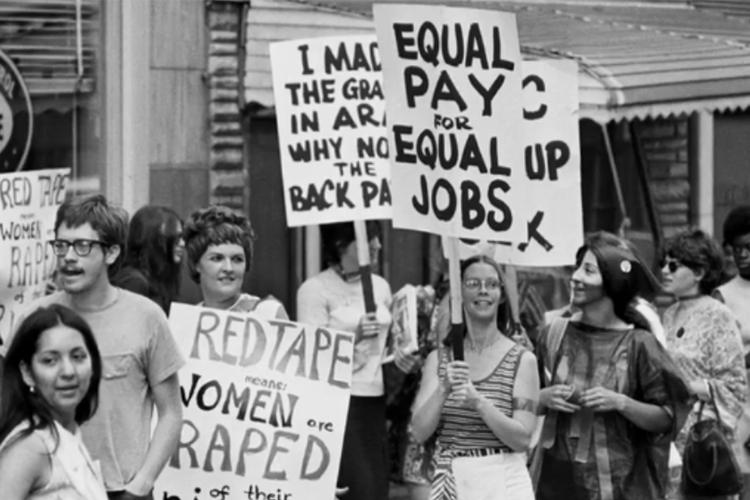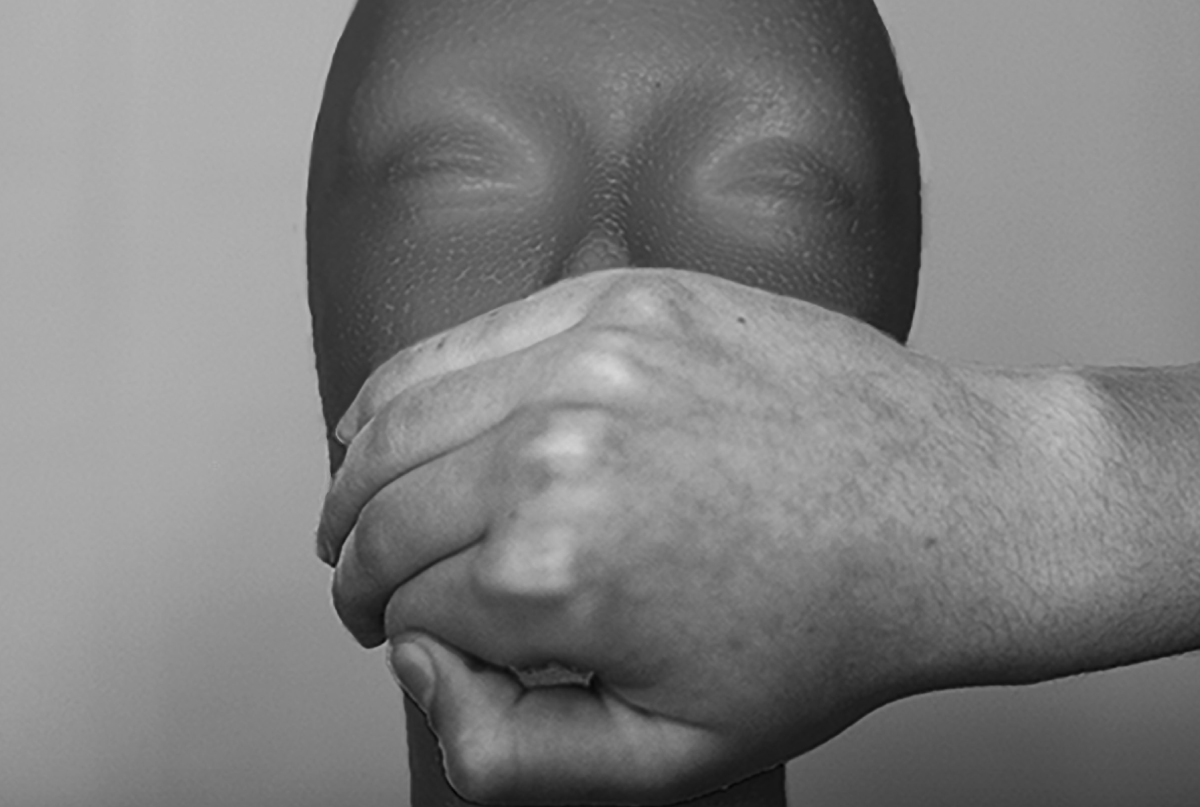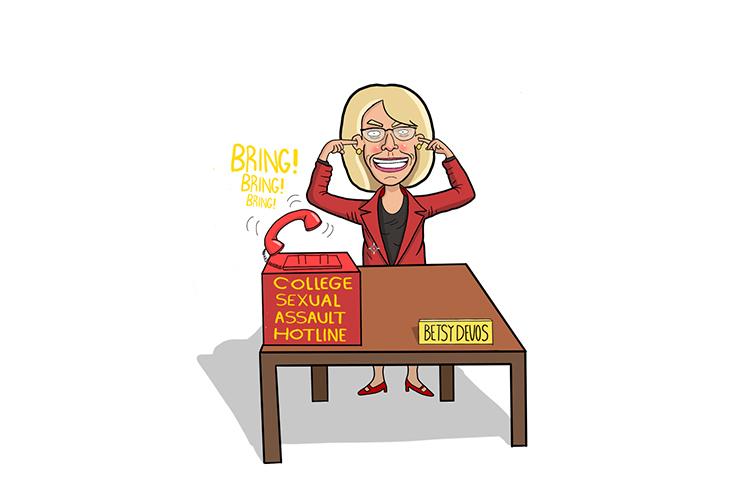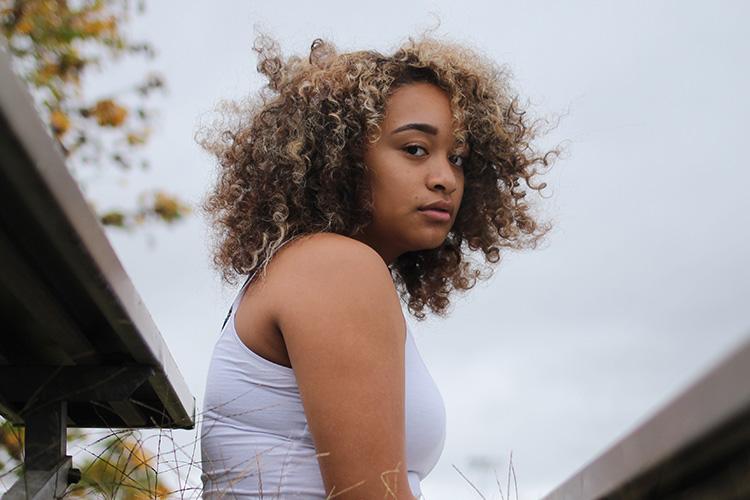Content warning: This story includes details about rape.
In September 1944 in Abbeville, Alabama, a black woman named Recy Taylor was walking home from church when she was attacked by six young white men. According to an article by The Associated Press, the six white attackers forced Taylor to a secluded area and took turns raping her, afterward leaving her stranded on the side of the road.
Later, the men accused Taylor of prostituting herself to them. When Taylor denied these claims and continued with her testimony, her house was firebombed, forcing her to move. She was eventually offered money to disregard the rape.
Hoping to draw attention to Taylor’s story, Rosa Parks – a Civil Rights activist and investigator for the National Association of the Advancement of Colored People (NAACP) – created a committee for Taylor. Nonetheless, none of her attackers were indicted.
Throughout history, the pattern of sexual assault has been clear – it is less about sex and more about power. “(Sexual assault is) not about sex. It’s about subjugation and power and violence, and that’s not reflected in the way we legally talk about it and the way that we culturally talk about it,” says Isabel Mace-McLatchie, a teen council member and Planned Parenthood peer educator. White men have used sexual violence as a way to control and exert dominance over marginalized or vulnerable groups of people in the United States for centuries.
In 1492, Christopher Columbus arrived in the Caribbean. At this time, sexual assault within Native communities was extremely uncommon because of the respect women received. Amy Casselman, a professor of Native American studies at San Francisco State University says in an interview with VICE, “In the rare cases in which violence against native women did occur, native nations used their own fully functioning systems of law and order to swiftly address the perpetrator and restore balance to the community.”
In Columbus’ relations with Native people, he used sexual assault as an exertion of power and status. Columbus raped and beat Native women and “gifted” them to his lieutenants for the purpose of sex. He also started a sex slave trade of young Native girls. In a letter to a friend in 1500, Columbus wrote, “A hundred castellanoes are as easily obtained for a woman as for a farm, and it is very general and there are plenty of dealers who go about looking for girls; those from (ages) nine to ten are now in demand.”
While it didn’t mark the origin of sexual assault, the arrival of Europeans in the Americas signified the beginning of a system of racial oppression through sexual assault and exploitation. During the mass genocide and colonization of Native Americans, rape became a way for white colonizers to control Native societies.
The colonists governed under English Common Law, which proclaimed that women were property to be protected from other men. “Rape is more than a metaphor for colonization, however; it is integral to colonization,” says Sarah Deer, a citizen of the Muscogee Nation and a law professor at the William Mitchell College of Law in her book, “The Beginning and End of Rape.” Sexual assault, therefore, goes hand in hand with colonization, another exertion of power that accompanies the conquering of land and people.
Slavery in the United States began in 1619, when the first slaves were brought from Africa to the colonies, and was present in the U.S. for over two centuries. In this era, it was common for white slave owners to abuse and rape their slaves. Since slaves were not legal citizens, they were not given any basic human rights. Rape was considered a property crime under English Common Law, deeming the slaves themselves possessions of the white man.
This insinuated that enslaved Africans were no more than objects. During the Civil War, Northerners would rape slaves as a war tactic against Southern slave owners. According to an article by the New York Times, in 1863 a Southern soldier wrote, “The Yankees (Union soldiers) has been through here. Seem to be their object to commit rape on every Negro woman they can find.”
Whites continued to use sexual assault as a way to oppress black people well into the twentieth century.
In the Reconstruction era, after slavery was abolished, racial tension was prevalent in the United States, particularly in the South. According to the NAACP’s website, lynching was a way for whites to frighten black people into submission. Under Jim Crow Law, black men were often falsely accused of sexual misconduct against white women and were lynched without trial. Lynch mobs would kidnap, torture and murder black men by hanging or burning them, and were often aided by law enforcement. The brutal treatment of black men accused of rape was contrasted by the lenient judiciary treatment of white perpetrators.
As explained in Sharon Block’s “Rape and Sexual Power in Early America,” white men accused of rape have often walked away without charges. In New York City in the early 19th century, Captain James Dunn, a white upperclassman, raped a black woman named Sylvia Patterson. He was charged only with assault with intent to seduce. “In the end, the court convicted Dunn, but the judgment was only one dollar – a real commentary on what they thought her sexual integrity was worth,” Block says.
These injustices against black people were challenged in the 1950s, when the Civil Rights Movement began. This movement wasn’t just about equal rights and integration – it also included activism against sexual assault, led predominately by black women. One such leader was Rosa Parks. Contrary to common teachings about Parks, she was an involved activist years before she said “no” on a bus in 1955.
A decade before the bus boycotts in Montgomery, Alabama, Parks was an investigator for the Montgomery branch of the NAACP. According to “At the Dark End of the Street,” a book by Danielle McGuire, Parks traveled around Alabama to collect testimonies and document racially motivated crimes against black people, including lynchings of black men and sexual assault against black women perpetrated by white men.
“(Sexual Assault is) not about sex. It’s about subjugation and power and violence, and that’s not reflected in the way we legally… (and) culturally talk about it.” – Isabel Mace-McLatchie, Planned Parenthood Teen Council member
Following Recy Taylor’s brutal assault in 1944, Parks was sent to investigate the case. A survivor of attempted assault by a white man herself, Parks worked to organize the Committee for Equal Justice, a program that aimed to help black women after experiencing interracial rape. Because of Park’s efforts, Taylor’s story received national recognition.
Although Taylor’s testimony did not result in the indictment of her attackers, the committee was an important precedent to the Civil Rights Movement.
In the 1960s, backlash against the injustices that Latinx farm workers faced became the foundation for the United Farm Workers of America. Founders Dolores Huerta and Cesar E. Chavez aimed to improve wages and working conditions for farmworkers. Aside from back-breaking labor and extremely low wages, female farmworkers were also subjected to groping, harassment and rape in the fields, often committed by their supervisors.
“I became aware of it as a young woman, and my mother never let me work in the fields,” says Huerta in “Rape in the Fields,” a documentary by Public Broadcasting Service’s series “Frontline.” Part of Huerta’s work included advocating against sexual assault towards female farmworkers.
Despite women of color fighting against sexual assault for decades, they had not received much media coverage. According to an article by Martha Rampton, a history professor at Pacific University, the 1960s marked the rise of second-wave feminism. First-wave feminism – which lasted from the 1800s to early-mid 1900’s – focused on women’s voting rights, while the second wave touched on family, work, sexuality and sexual assault.
The second wave-feminist movement attempted to diversify, but white women’s efforts overshadowed those of women of color.
“Up until that point, there hadn’t really been a lot of prominent white women in that position talking about those things, and it wasn’t until white women became part of that conversation, really, that people started to listen,” says Mace-McLatchie.
Although the work of white women during second–wave feminism was integral to the rights of women in the U.S. today, it failed to include and recognize the specific struggles of different groups of women of color.
“The second wave of feminism … had a heavy focus on sexual violence and sexual assault. You started to see movements diversify a little bit more in terms of who got air time,” says Cecilia Wolfe, who works at the Sexual Assault Resource Center. “So black women in particular mobilized in really important ways … but also experienced a lot of exclusion still.”
In 1991, Anita Hill – then a black law professor teaching at University of Oklahoma’s College of Law – testified against Clarence Thomas, a black Supreme Court justice member nominee, with allegations of sexual harassment in the workplace. As a black woman coming forward against a well-liked public figure, testimonies like hers were uncommon. Thomas was later confirmed to the Supreme Court, ultimately discrediting Hill’s testimony and disregarding her experience.
However, Hill still had a strong impact on how sexual harassment was viewed in the workplace. CNN reports that, after the hearing, the number of filed reports of sexual misconduct in the workplace doubled, as women felt inspired by Hill’s story to take action against their assailants.
“(Sexual assault) was not a video you had to watch, it was not a discussion that had to be had, there was no written policy that people had to sign, and now (those procedures are) just standard,” says Traci Boyle-Galestiantz, who runs the Women’s Resource Center at Portland Community College. “People don’t even remember a time when that didn’t happen, but it wasn’t until Anita Hill came forward that that came to be.”
While equal rights movements and figures like Anita Hill have made important changes regarding sexual assault, the fight is far from over. A statistic from the Rape, Abuse and Incest National Network states that one in six women will be a victim of attempted or completed rape in their lifetime. A survey by Stop Street Harassment found that 81 percent of women have experienced some form of sexual harassment or assault.
Out of any demographic, Native women experience the highest rate of sexual assault per capita. It’s projected by the Justice Department that about one in three Native women experience rape in their lifetime. According to Vice, over 80 percent of the perpetrators against Native women are white or non-native.
Amy Casselman, author of “Injustice in Indian Country: Jurisdiction, American Law, and Sexual Violence Against Native Women,” explains that tribal governments do not have criminal jurisdiction over non-native people. Therefore, assaults that take place on a reservation by a white man often cannot be prosecuted. Because of this loophole, Native women are targeted by white men at a high ratio, preserving the power difference that dates back to colonial times.
Additionally, female farmworkers are still sexually assaulted by their supervisors at an alarming rate, despite the work of the United Farm Workers of America. In a study by Maria Elena Trevino, 90 percent of female farmworkers said that sexual harassment is a major problem in the workplace.
“There are supervisors who try to, who use their power to mistreat or abuse people,” says Maricruz Ladino in “Rape in the Fields,” who has worked in U.S. crop fields for eighteen years. “They look at you like they own you, and whenever they want you, they can have you.”
In the film, a woman describes a supervisor taking her to a secluded area, putting a gun to her head and raping her. The man, who was her supervisor at the time, denied these allegations, claiming that he and the woman had been romantically involved.
“Sexual harassment is an epidemic in the fields and it again goes back to the vulnerability women have,” says Huerta.
Out of any demographic, Native women experience the highest rate of sexual assault per capita. About one in three Native women.
There are over half a million women working in the fields of the United States, most of whom are undocumented immigrants. These women are threatened with deportation or losing their job if they do not comply or speak out about their abuse. For years, women have endured this treatment to keep their jobs and support their families, but many never report it.
But in recent years, women have been inspired to come forward about their experiences as the #MeToo movement has taken the world by storm. Its purpose is to show the magnitude of sexual assault while holding men accountable and unifying and empowering women. The movement exploded in October of 2017 when actress Alyssa Milano posted “Me too” on Twitter.
The #MeToo movement is lead predominantly by white women in Hollywood. While it is important to see well-known women share their stories, the movement lacks representation. The stories of people of color, queer people and socioeconomically disadvantaged people are often overshadowed by those of more privileged women.
On November 12, 2017, thousands gathered in Hollywood for the Take Back the Workplace March in protest of sexual assault and harassment in the workplace. According to an article by Time Magazine, a letter from before the march was shared on behalf of 700,000 female farm workers expressing solidarity with Hollywood actresses. While lending support and appreciation, the letter also aimed to draw attention to the silencing of Latinx voices. “We do not work under bright stage lights or on the big screen,” it said. “We work in the shadows of society in isolated fields and packing houses that are out of sight and out of mind for most people in this country.”
“We do not work under bright stage lights or on the big screen. We work in the shadows of society in isolated fields and packing houses that are out of sight and out of mind for most people in this country.” – Alianza Nacional de Campesinas
Similarly, many are unaware that long before celebrities began using social media as a platform to share their stories, the movement was started by a black woman and American activist named Tarana Burke. Burke met a young girl in 1997 who described intense accounts of sexual abuse experienced at home. Burke found herself speechless from the girl’s story, and the experience stayed with Burke for many years. “I watched her put her mask back on and go back into the world like she was all alone and I couldn’t even bring myself to whisper…me too,” writes Burke on the official website of the Me Too movement – a movement focused on supporting victims of sexual assault, particularly women and girls of color.
While most of the media centers around white, cisgender women, the #MeToo movement is rooted in helping young black and brown girls in vulnerable communities who have survived sexual assault, abuse and exploitation. Although all experiences are valid and hold a strong importance in the movement, whitewashing shows where the power lies when it comes to whose voices are being heard and whose are being silenced.
Sexual assault has been used to instill fear in people of color, maintaining a racialized power structure in society. “I didn’t go out at night,” says Recy Taylor in a 2011 interview with National Public Radio. “And then I got afraid of living right there after that happened too because I was afraid that maybe something else might happen.”








































